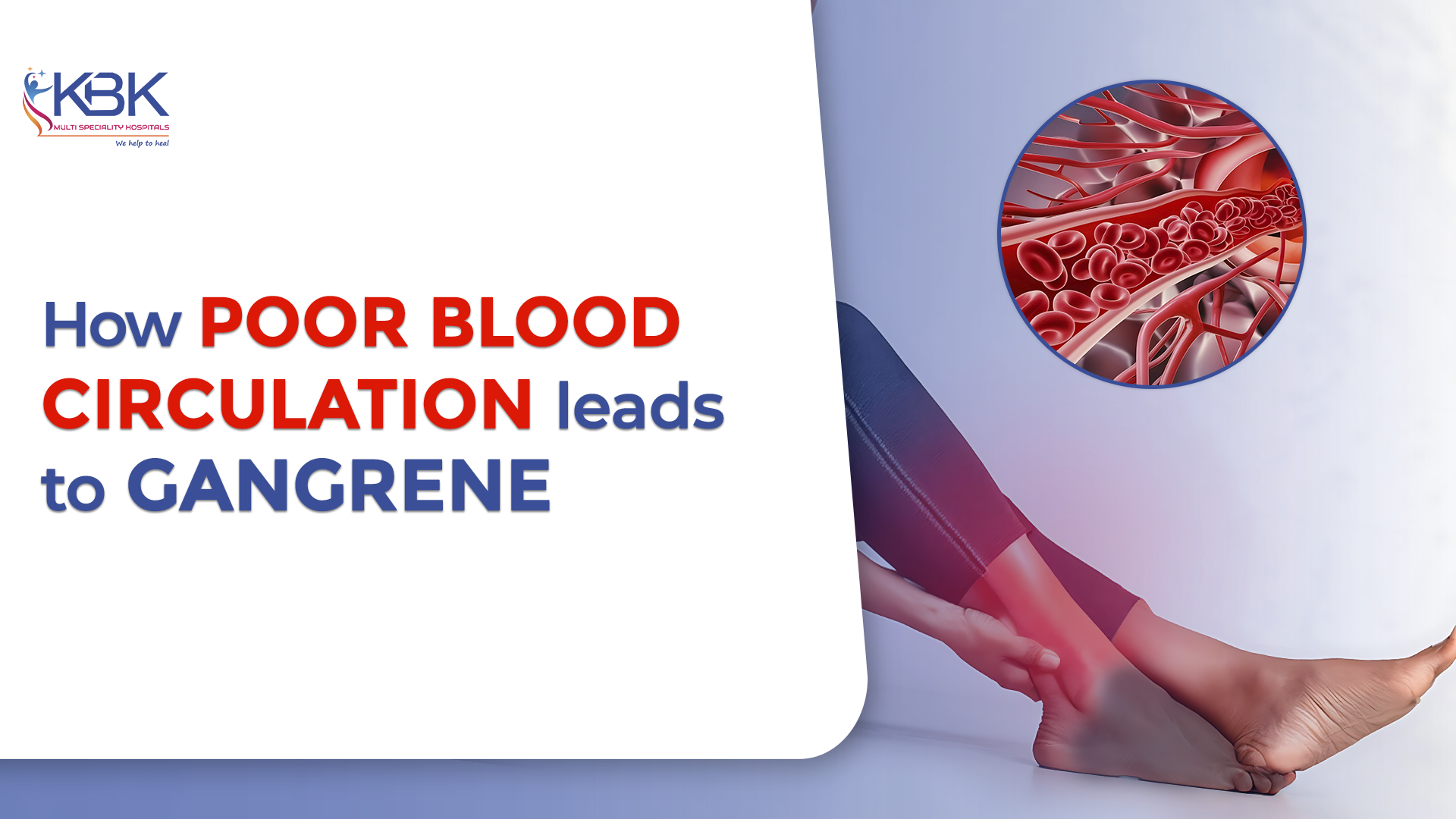Healthy blood circulation plays a vital role in keeping your body tissues alive and strong. It ensures that every part of your body receives enough oxygen and nutrients. But when blood flow becomes weak or restricted, it can cause serious health problems. One of the most dangerous outcomes of poor blood circulation is gangrene, a condition where tissues start to die due to a lack of oxygen. Understanding how this happens and learning how to prevent it can help you stay safe and healthy.
What Happens When Blood Circulation Is Poor
When circulation slows down, your tissues don’t receive enough oxygen and nutrients to function properly. This often leads to coldness, numbness, tingling, or swelling in the legs and feet. Small cuts or blisters may take longer to heal because your body isn’t getting enough blood to repair the damaged skin.
Poor blood circulation can occur due to several health conditions such as diabetes, peripheral artery disease (PAD), high cholesterol, smoking, or obesity. These conditions can narrow or harden the blood vessels, making it harder for blood to flow freely. Over time, the tissues in your feet and legs become more vulnerable to damage, infection, and even tissue death.
How Poor Blood Circulation Leads to Gangrene
When blood flow is severely restricted, oxygen and nutrients can’t reach the tissues. Without oxygen, the cells begin to die, and the tissue slowly breaks down. This creates a perfect environment for bacteria to grow, which leads to infection.
Once infection sets in, the body’s natural healing process becomes even slower due to the lack of circulation. The tissue begins to decay, turning black, blue, or green—a clear sign of gangrene. People with diabetes, high blood pressure, or vascular problems are especially at risk.
Early symptoms include:
- Coldness or numbness in the affected area
- Change in skin color (pale, bluish, or black)
- Foul-smelling discharge
- Severe pain or, in later stages, complete loss of sensation
Ignoring these warning signs can allow gangrene to spread quickly and may lead to severe complications.
How to Stop Poor Blood Circulation from Leading to Gangrene
Preventing gangrene starts with improving your blood flow and protecting your limbs. Here are some effective ways to prevent poor circulation from turning into a serious condition:
- Stay Active: Engage in regular physical activities like walking, swimming, or yoga to keep your blood moving.
- Eat Healthy: Include fresh fruits, vegetables, whole grains, and foods rich in omega-3 fatty acids to support heart health.
- Avoid Smoking: Smoking damages blood vessels and reduces oxygen flow to your tissues.
- Control Health Conditions: Keep your blood sugar, cholesterol, and blood pressure within normal limits.
- Maintain Foot Hygiene: Wash your feet daily, keep them dry, and moisturize to avoid cracks or infections.
- Wear Comfortable Shoes: Avoid tight or uncomfortable footwear that restricts blood flow.
- Inspect Regularly: Check your feet and legs daily for cuts, sores, or color changes. Seek medical help immediately if you notice anything unusual.
Even simple lifestyle changes can make a big difference in maintaining healthy circulation and preventing gangrene.
Conclusion
Poor blood circulation may not cause immediate pain, but over time it can lead to serious conditions like gangrene if ignored. Paying attention to your body, especially your feet and legs, is essential for early detection. Adopting healthy habits—such as regular exercise, a balanced diet, and good hygiene—can greatly improve blood flow and protect your tissues from damage.
Remember, early action saves lives. If you notice any signs of slow healing, numbness, or discoloration, consult a healthcare professional right away. With proper care and timely attention, you can stop poor circulation from turning into a life-threatening problem and keep your limbs healthy for years to come.



